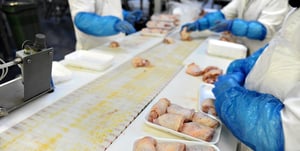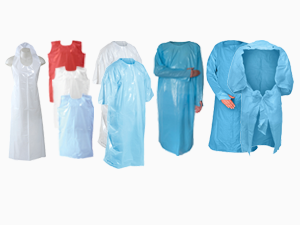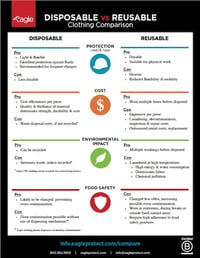Let's discuss the advantages and disadvantages of single-use versus reusable protective clothing.
 PROTECTION: Level & Type
PROTECTION: Level & Type
An important consideration is the degree of protection offered by the two types of clothing. Single-use is generally made from high tensile strength virgin plastic and reusable from cotton or polyester fabric.
DISPOSABLEPro:
|
REUSABLEPro:
Con:
|

Did You Know?
Due to foreign matter found in washed clothing, single-use, made from high tensile strength virgin plastic (polyethylene, LDPE) was developed for New Zealand’s food processing industries in order to meet the demanding customer food safety and hygiene requirements.
 COST
COST
A detailed price analysis of clothing's actual lifetime cost must include:
DISPOSABLEPro:
Con:
|
REUSABLECon:
|

Studies have shown the average cost of a disposable apron was equivalent to $0.18. Compare this to a reusable apron at $0.58, due mainly to the high cost of preparation and washing.
 ENVIRONMENTAL IMPACT
ENVIRONMENTAL IMPACT
Consider which type has a greater environmental impact:
DISPOSABLEPro:
Con:
|
REUSABLECon:
|
The assumption that disposable clothing has a greater environmental impact than reusable is debatable.

 Food Safety: Cross-Contamination Implications
Food Safety: Cross-Contamination Implications
The primary sources of L. monocytogenes contamination within food-processing plants are employees, through their clothing or skin coming into direct contact with products.
DISPOSABLEPro:
|
REUSABLECon:
|
Enforced food safety practices prevent clothing from spreading contamination, assisted by the ease of single-use clothing changes.

Eagle Protect Disposable Clothing
Eagle Protect offers a full line of high-quality low-density polyethylene (LDPE) protective clothing. From disposable aprons and smocks to long sleeve thumbloop gowns, Eagle's clothing is custom designed for a range of coverage requirements.
For an environmentally friendly bonus, Eagle's PE items are recyclable through a closed loop process in which customers can buy back the recycled product in garbage bags.
Send me the Disposable vs Reusable Comparison
|
|
 |



